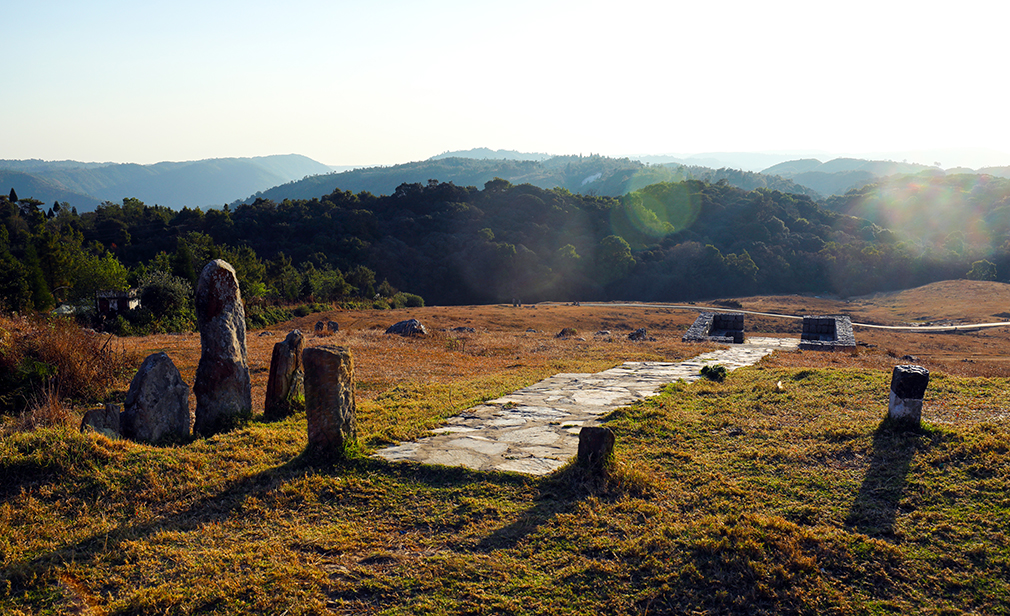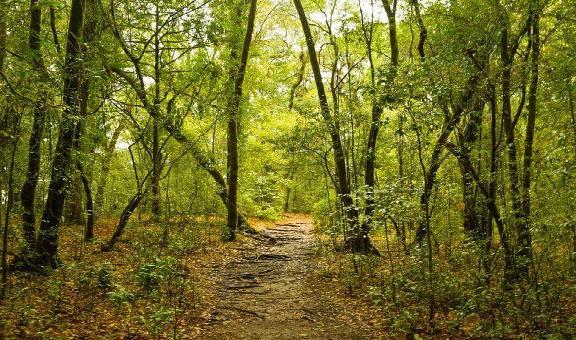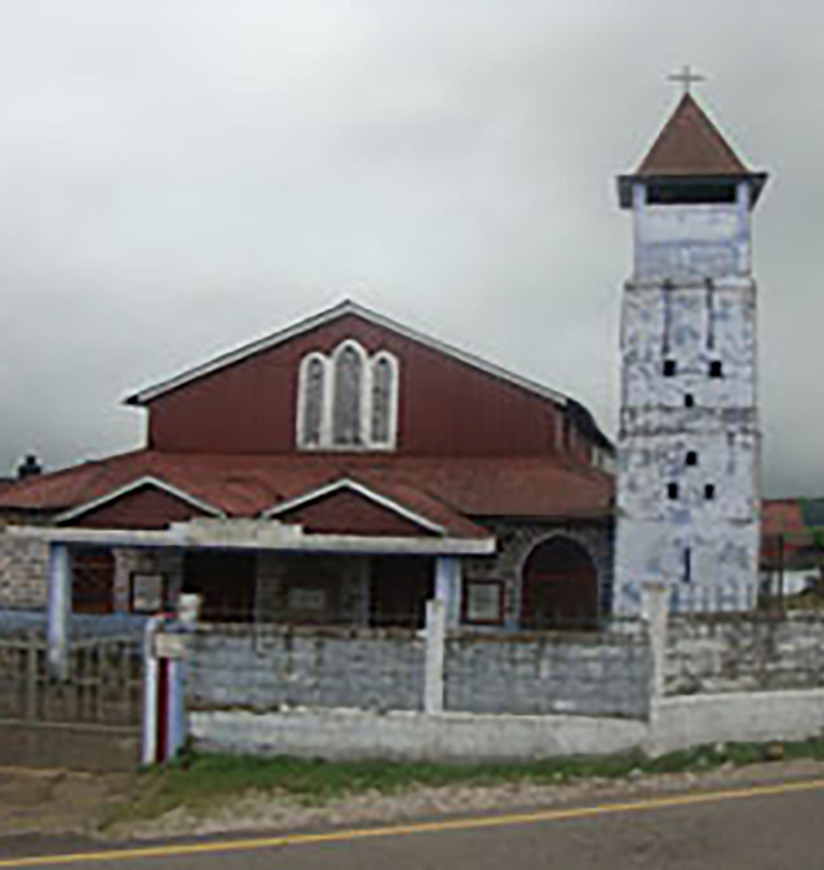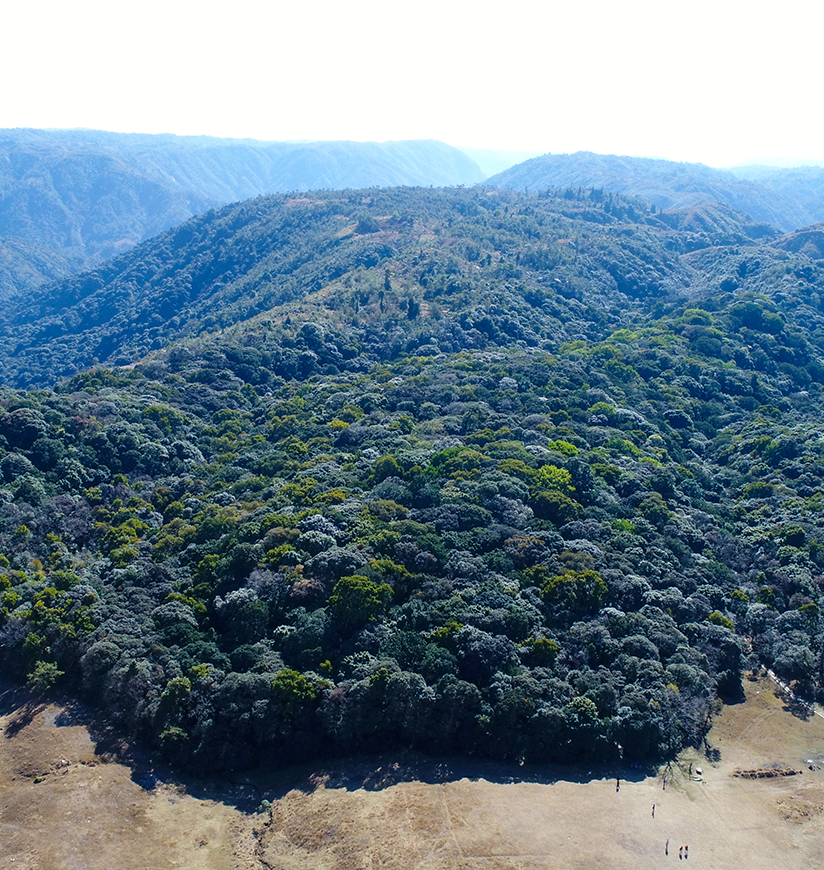The sacred haven: Mawphlang Sacred Grove
At the heart of Mawphlang, you'll discover the revered Mawphlang Sacred Grove, a sanctuary of profound cultural and ecological significance. Here, visitors are kindly asked to leave no trace behind as they explore this sacred forest - not even a pebble or twig. The ancient canopy overhead and soft earth beneath your feet transport you to a bygone era, a stark contrast to the lush meadows and vibrant pines that surround the hills. Within the grove, you'll find remnants of coronation and sacrificial sites, serving as a testament to a dignified past. Monoliths stand tall, their enduring presence a reminder of historical gatherings of Khasi leaders. The sacred groves of Mawphlang have seen a resurgence in popularity, celebrated for their conservation message. After immersing yourself in this natural wonder, venture to the Khasi Heritage Village, where you can admire a diverse array of vernacular architecture and design.
Journey through time: David Scott Trail
Embark on a journey through history along the David Scott Trail, one of Meghalaya's oldest pathways. This trail was once part of a 100-kilometer trade route established during British rule in India. It stretches 16 kilometers, winding its way through mountains, valleys, forests, and rivers. Its preservation is a testament to Meghalaya's timeless beauty. As you ascend to an altitude of 4,892 feet, you'll be treated to breathtaking views of the Umiam River running alongside deep valleys. Connecting the renowned Khasi villages of Mawphlang and Lad Mawphlang, the trail bears the name of the British administrator, David Scott, who served in northeastern India during the early 1800s. This historic route welcomes hikers of all ages, making it a flexible adventure suitable for beginners, children, and elders.
The lush oasis: Lyngiong Sacred Grove
Approximately 33 kilometers southwest of Shillong, Meghalaya's capital city, lies the Lyngiong Sacred Grove. This preserved forest, one of the largest of its kind, hosts a treasure trove of orchids, rare medicinal trees, and a diverse array of flora and fauna. Within the grove, U Basa, also known as the Basa Ryngkew, is revered as the guardian spirit watching over the village and its inhabitants. Every year, the lyngdoh, or priest, performs rituals in the grove as a tribute to this benevolent protector. These sacred groves are not just havens for nature; they are also embodiments of cultural and spiritual significance. Each grove has its own legends and myths, woven into its very fabric. The beliefs held by locals play a pivotal role in conserving the rich biodiversity of the region.
Preserving the beauty
The Mawphlang Sustainable Tourism Society, a cornerstone of responsible tourism, plays a vital role in protecting the environment, ensuring the well-being of tourists, and engaging local communities. With a dedicated team of 40 trained guides, they offer a secure and enriching experience, particularly in the cherished sacred groves. Their commitment extends to promoting homestays, fostering community involvement, and identifying potential tourist destinations. This dedication to sustainability has led to a significant rise in tourist visits, further solidifying Mawphlang's reputation as a model of eco-friendly and culturally rich tourism.
Best time to visit
The best time to visit Mawphlang is during the months of October to April. This period offers the most favorable weather conditions, with mild temperatures and minimal rainfall. The monsoon season, from June to September, should be avoided as heavy rains may make outdoor activities and treks challenging. It's recommended to plan your visit during the dry season to fully enjoy the natural beauty and cultural experiences that Mawphlang has to offer.














































